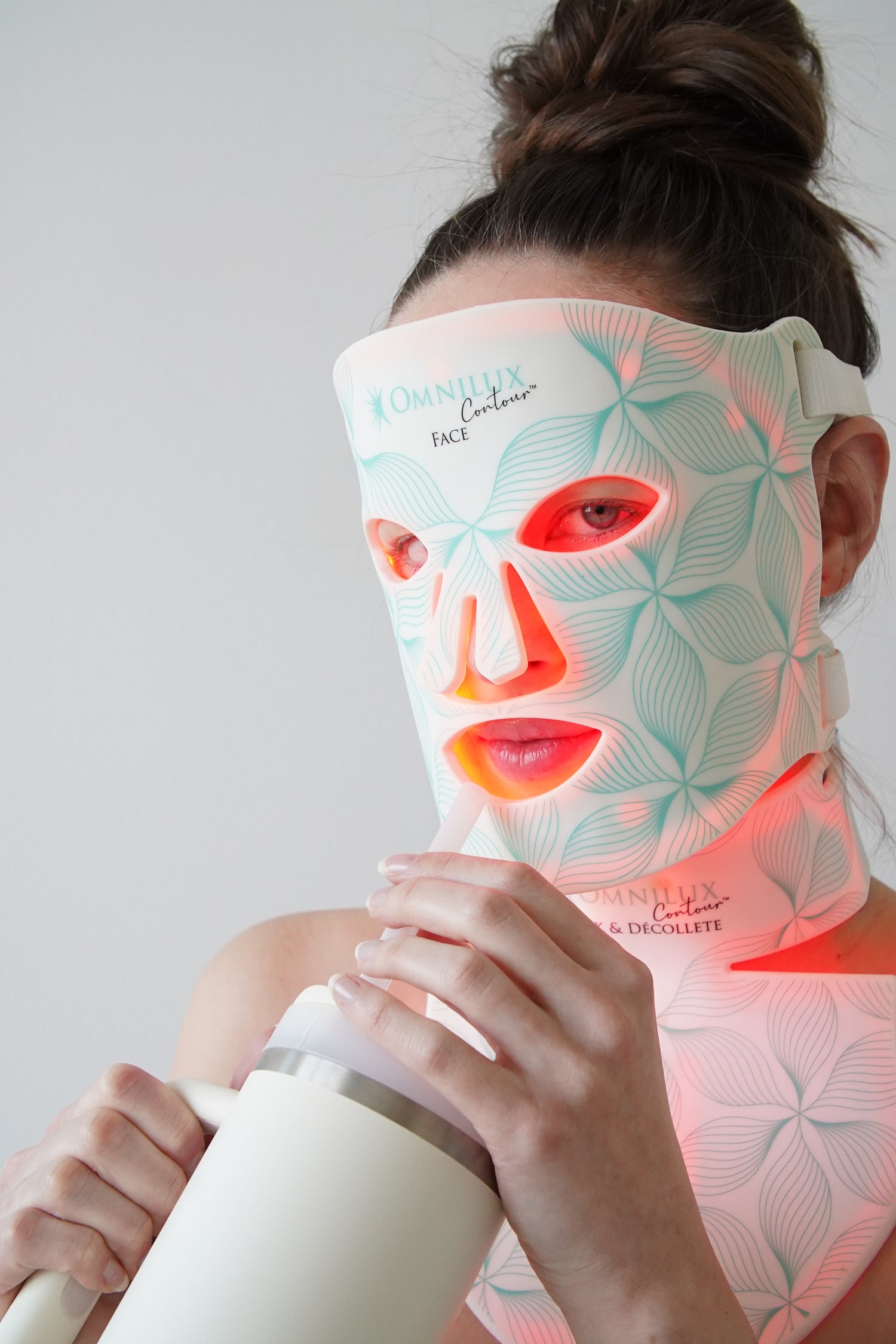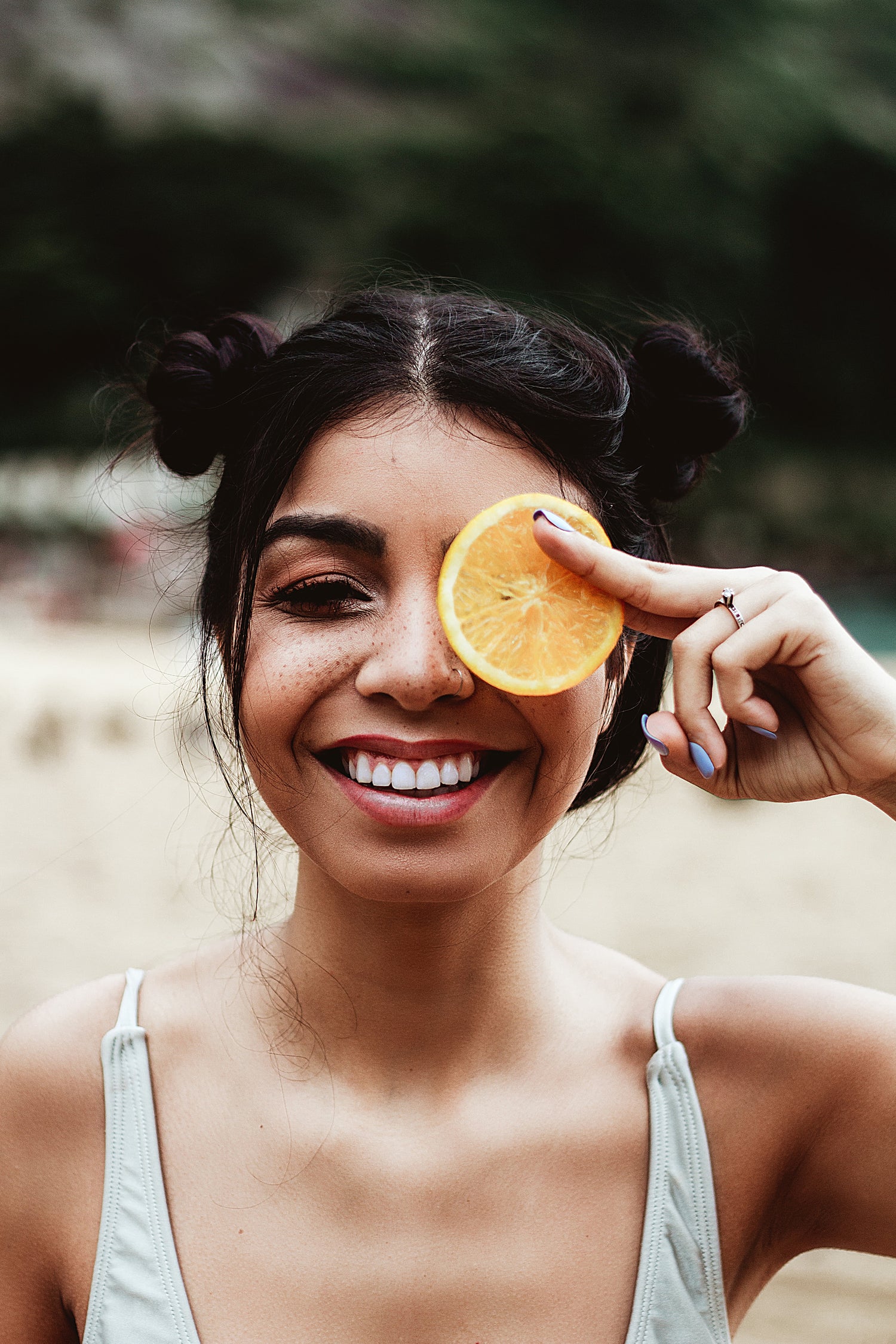In the world of skincare, one size does not fit all. When it comes to skin types, each requires a unique care routine.
If you’re like many people, you’ve probably been using the same cleanser and moisturizer for years without really giving much thought to your skin type. Or maybe you recently ran out of your favorite products and are now stuck in skincare purgatory, trying to figure out what might work best for you.
Either way, understanding your skin type is essential if you want to get the best possible results from your skincare routine. Here’s a breakdown of the different skin types and how to identify yours.
What is My Skin Type, and Why is It Important to Know?
There are four primary skin types:
- Normal
- Combination
- Oily
- Dry
Knowing your skin type allows you to create a skincare routine filled with products appropriate for your unique concerns and goals. Each skin type needs special care to stay balanced and nourished. Read on to learn more about each type and learn what products we recommend.
The Different Types of Skin and Their Characteristics
Normal Skin
Normal skin is well-balanced and has no excessive sensitivity or oiliness. It’s not too dry or oily and has a small follicle size. An even skin tone, soft texture, and good elasticity characterize normal skin.
Objectives for normal skin include developing a solid maintenance skincare routine with professional preventative treatments to keep skin looking and feeling its best.
Combination Skin
Combination skin is characterized by two distinct areas on the face:
- Oily
- Normal or Dry
Combination skin usually presents with a larger follicle size in the t-zone area (forehead, nose, and chin) and a smaller follicle size in the cheeks and sides of the face. Typically, the t-zone area is more oily and blemish-prone due to the buildup of dead skin and oil in the pores, while the sides of the face are more normal or may be dry and/or rough with flaking.
Objectives for combination skin include maintaining a regular cleansing and exfoliation routine. Often, those with combination skin may need to use a variety of products to address their skin’s differing needs based on area.
Oily Skin
Oily skin is the result of excess sebum (aka oil) production, which can make skin appear shiny and greasy throughout the day. Oily skin has a larger follicle size, and comedones and blemishes may be present. With oily skin, it's essential to find products that won't strip away all of your natural oils but will still help keep excess shine at bay while reducing breakouts and clogged pores.
Objectives for oily skin include creating a cleansing and exfoliating routine with hydrating, water-based products. It’s also vital to choose non-comedogenic (aka non-pore-clogging) products if you have oily skin.
Dry Skin
Dry skin is characterized by minimal oil production and is not well hydrated. It has small follicles and is typically not acne-prone. Dry skin may lack luminosity and appear flaky, rough, tight, or blotchy.
Objectives for dry skin include using oil-based products to help lock in hydration while also protecting against environmental aggressors such as wind, sun exposure, etc.
Best Products for Your Skin Type
Best Products for Normal Skin
Best Serum for Normal Skin: DEJ Daily Boosting Serum
DEJ Daily Boosting Serum gives skin a boost of antioxidants and hydration to help promote balance and strengthen the natural moisture barrier, which helps normal skin maintain an optimal pH level. Acetyl L-carnitine helps skin maintain firmness and resilience, and omega-3 fatty acids support a healthy skin barrier.
Best Sunscreen for Normal Skin: ISDIN Eryfotona Ageless Tinted Mineral Sunscreen
Eryfotona Ageless is a light mineral SPF 50 that repairs existing sun damage, reduces fine lines and wrinkles, and is suitable for normal skin, as well as all skin types. Its versatile tint is appropriate for virtually all skin tones, too. 10.7% zinc oxide provides ultimate sun protection while peptides and DNA repairsomes repair damage and prevent further photodamage.
Best Products for Combination Skin
Best Cleanser for Combination Skin: Revision Gentle Foaming Cleanser
Gentle Foaming Cleanser gently and effectively removes makeup, oils, and debris from skin with a rich, velvety foam that soothes and calms. Allantoin boosts skin’s moisture retention, and aloe vera hydrates and soothes.
Best Moisturizer for Combination Skin: DefenAge 24/7 Barrier Balance Cream
24/7 Barrier Balance Cream is a super hydrator that promotes a balanced moisture barrier, revealing more radiant and smooth skin. Age-Repair Defensins, DefenAge’s unique rejuvenating complex, signal your body to create new cells by activating dormant cells, supporting skin’s cellular renewal process and maintaining balance.
Best Products for Oily Skin
Best Face Mask for Oily Skin: Revision Pore Purifying Clay Mask
Revision’s Pore Purifying Clay Mask helps unclog pores and eliminates excess oil, leaving skin feeling smooth, soft, and soothed. Freshwater silt purifies skin and smooths texture while cucumber extract, oat kernel extract, and bisabolol soothe and calm.
Best Serum for Oily Skin: eraclea Pure Hydration Serum
Eraclea Pure Hydration Serum contains anti-inflammatory and antibacterial ingredients, like zinc, to promote healing and soothe stressed skin. HylaFusion®, a unique hyaluronic acid complex, provides lasting hydration to help balance skin’s oil-to-water ratio.
Best Products for Dry Skin
Best Serum for Dry Skin: Saint Jane Luxury Beauty Serum
Luxury Beauty Serum is the ultimate oil serum for dry skin – it contains the perfect cocktail of oils, butters, and extracts to deeply hydrate and nourish. Sunflower seed oil supports your skin’s natural moisture barrier and hydrates, full spectrum hemp extract calms and nourishes, and rosehip oil boosts elasticity and collagen production, just to name a few.
Best Moisturizer for Dry Skin: RetrinAL Ceramide Lipid-Replenishing Balm
RetrinAL Lipid-Replenishing Balm is perfect for dry skin because it contains restorative and hydrating ingredients that boost your skin’s barrier function and improve moisture retention. Bakuchiol, a plant-derived retinol alternative, corrects signs of aging, increases skin’s elasticity, and hydrates. Niacinamide hydrates, brightens, and defends with antioxidant properties, and a unique ceramide complex helps restore and maintain skin’s barrier function.
Final Thoughts on Skin Types
No matter what your skin type is, using the right products for your unique skin is one of the best things you can do to get an instant glow-up. Your skin will thank you as it soaks in the nourishment it needs, and you’ll be rewarded with a radiant, luminous complexion.
Resources
Addae, Ajoa, et al. “Clinical Study to Evaluate the Efficacy and Tolerability of Cosmeceuticals Targeting the Dermal-Epidermal Junction.” Journal of Drugs in Dermatology, vol. 20, no. 12, 2021, pp. 1314–1321, https://doi.org/10.36849/jdd.6355.
Bahari, Aqilah Noor, et al. “Response Factorial Design Analysis on Papain-Generated Hydrolysates from Actinopyga Lecanora for Determination of Antioxidant and Antityrosinase Activities.” Molecules, vol. 25, no. 11, 2020, p. 2663, https://doi.org/10.3390/molecules25112663.
Banchhor, Madhuri, and Swarnalata Saraf. “Potentiality of Papain as an Antiaging Agent in Cosmetic Formulation.” Pharmacognosy Review, vol. 2, no. 4, 2008, pp. 266–270.
Baswan, Sudhir M, et al. “Therapeutic Potential of Cannabidiol (CBD) for Skin Health and Disorders.” Clinical, Cosmetic and Investigational Dermatology, Volume 13, 2020, pp. 927–942, https://doi.org/10.2147/ccid.s286411.
Decker, Ashley, and Emmy M Graber. “Over-the-Counter Acne Treatments.” The Journal of Clinical and Aesthetic Dermatology, vol. 5, no. 5, May 2012, pp. 32–40.
Draelos, Zoe, et al. “Clinical Evaluation of a Nature-Based Bakuchiol Anti-Aging Moisturizer for Sensitive Skin.” Journal of Drugs in Dermatology, vol. 19, no. 12, 2020, pp. 1181–1183, https://doi.org/10.36849/jdd.2020.5522.
Levin, Jacquelyn, et al. “How Much Do We Really Know About Our Favorite Cosmeceutical Ingredients? .” The Journal of Clinical and Aesthetic Dermatology, vol. 3, no. 2, Feb. 2010, pp. 22–41.
Lin, Tzu-Kai, et al. “Anti-Inflammatory and Skin Barrier Repair Effects of Topical Application of Some Plant Oils.” International Journal of Molecular Sciences, vol. 19, no. 1, Oct. 2017, p. 70, https://doi.org/10.3390/ijms19010070.
Matts, Paul J, et al. “A Review of the Range of Effects of Niacinamide in Human Skin.” International Federation Societies of Cosmetic Chemists, vol. 5, no. 4, 2002, pp. 285–289.
Mármol, Inés, et al. “Therapeutic Applications of Rose Hips from Different Rosa Species.” International Journal of Molecular Sciences, vol. 18, no. 6, 2017, p. 1137, https://doi.org/10.3390/ijms18061137.
Stoia, Mihaela, and Simona Oancea. “Selected Evidence-Based Health Benefits of Topically Applied Sunflower Oil.” Applied Science Reports, vol. 10, no. 1, Apr. 2015, pp. 45–49, https://doi.org/10.15192/pscp.asr.2015.10.1.4549.
Taub, Amy, et al. “Multi-Center, Double-Blind, Vehicle-Controlled Clinical Trial of an Alpha and Beta Defensin-Containing Anti-Aging Skin Care Regimen With Clinical, Histopathologic, Immunohistochemical, Photographic, and Ultrasound Evaluation.” Journal of Drugs in Dermatology, vol. 17, no. 4, Apr. 2018, pp. 426–441.
Williams, Lynda B., and Shelley E. Haydel. “Evaluation of the Medicinal Use of Clay Minerals as Antibacterial Agents.” International Geology Review, vol. 52, no. 7–8, 2010, pp. 745–770, https://doi.org/10.1080/00206811003679737.






